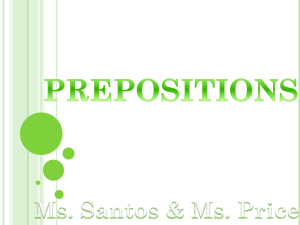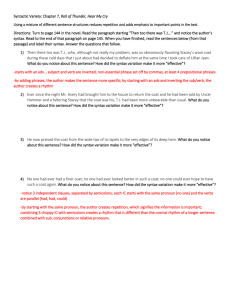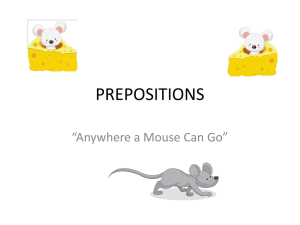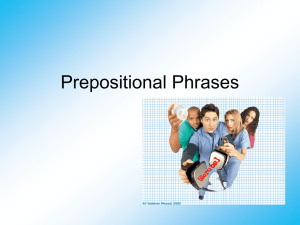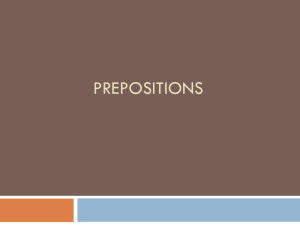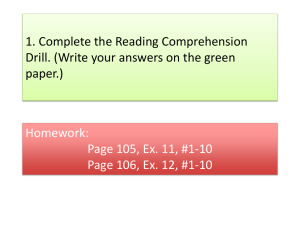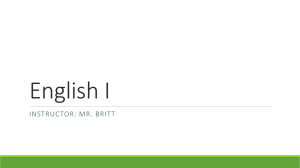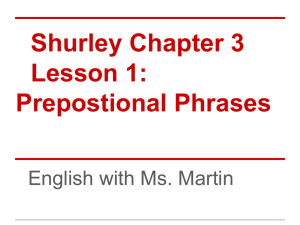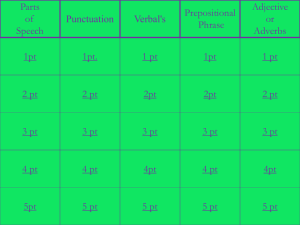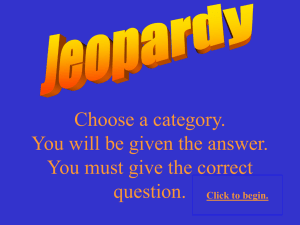Prepositions, Conjunctions, and Interjections
advertisement
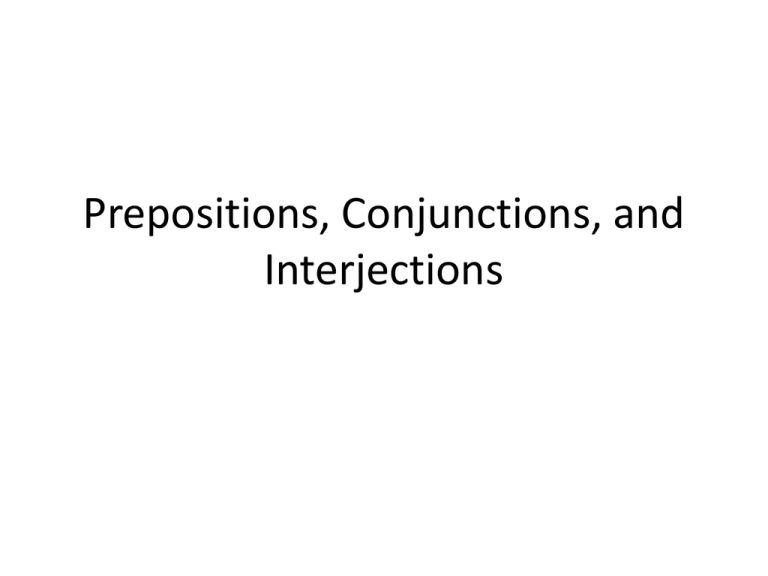
Prepositions, Conjunctions, and Interjections What is a Preposition? A preposition is a word that shows a relationship between a noun or pronoun and some other word in the sentence. A preposition is always followed by an object, either a noun or a pronoun. • The article about insects is interesting Preposition Prepositions In the sentences below, notice how each preposition expresses a different relationship between the worm and the apple. • The worm is on the apple. • The worm is beside the apple. • The worm is under the apple. • The worm is in the apple. Common Prepositions About At Despite Like To Above Before Down Near Toward Across Behind During Of Under After Below Except Off Until Against Beneath For On Up Along Beside From 0ut With Among Between In Over Within Around Beyond Inside Past without As By Into through Prepositional Phrases A prepositional phrase consists of a preposition, its object, and any modifiers of the object. The object of the preposition is the noun or pronoun following the preposition. • The ant scurried out the door. preposition Object of preposition Between or Among Use between when the object of the preposition refers to two people or things. • Ants share food between two nest mates. Use among when speaking of three or more. • Ants share food among all the colony members Preposition or Adverb? Sometimes the same word can be used as a preposition or as an adverb. If the word has no object, then it is an adverb. • The ant scurried out the door. preposition • The ant scurried out. Adverb Object Adjective Phrases An adjective prepositional phrase modifies a noun or a pronoun. Like an adjective, a prepositional phrase can tell which one, how many, or what kind. What kind? • The spider is a type of jumping spider. Which one? • The tiny bug on the windowsill is also a jumping spider. Adverb Phrase An adverb prepositional phrase modifies a verb, an adjective, or an adverb. Like an adverb, a prepositional phrase can tell where, when, how, why, or to what extent. • Jumping spiders live in many places. (where?) • These spiders are famous for their eight eyes. (why?) • They jump far for their size? (how?) Several prepositional phrases can work together. Each phrase after the first one often modifies the object of the phrase before it. • A spider sat (on the tip) (of a twig) (in a tree) When you write, try to place each prepositional phrase as close as possible to the word it modifies. Otherwise, you may confuse your readers. • With eight hairy legs, the bird chased the spider. • The bird chased the spider with eight hairy legs. Conjunctions A conjunction is a word used to join words or groups of words. Different kinds of conjunctions are used in different ways. Coordinating Conjunctions A coordinating conjunction connects words used in the same way. The words joined by a conjunction can be subjects, objects, predicates, or any other kind of sentence parts. subjects • Insects and crustaceans have eyes with many lenses. objects • Light enters the front or the sides of their eyes. Common Coordinating Conjunctions And But Or Not Yet So For Use and to connect similar ideas. Use but to contrast ideas. •Each lens can receive light and form a separate image. •Insects’ eyes are smaller than our, but their vision is more complex. Correlative Conjunctions Correlative conjunctions are pairs of words that connect words used in the same way. Like coordinating conjunctions, correlative conjunctions can join subjects, objects, predicates, and other sentence parts. Correlative Conjunction • Both flies and mosquitoes have compound eyes. Interjections An interjection is a word or phrase used to express emotion. • Hey, look at that bug. • It’s a cockroach! Yuck!
